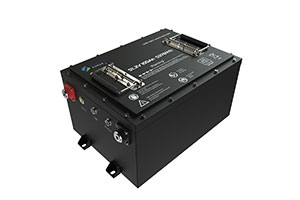How to Test Your Golf Cart Batteries: A Step-by-Step Guide
Getting the most life from your golf cart batteries means periodically testing them to ensure proper operation, maximum capacity, and detect potential replacement needs before they leave you stranded. With some simple tools and a few minutes of time, you can easily test your golf cart batteries yourself.
Why Test Your Golf Cart Batteries?
Batteries gradually lose capacity and performance over repeated charges and discharges. Corrosion builds up on connections and plates reducing efficiency. Individual battery cells can weaken or fail before the whole battery is done. Checking your batteries 3 to 4 times per year for:
• Adequate capacity - Your batteries should still provide sufficient power and range between charges for your golfing needs. If range has noticeably dropped, a replacement set may be required.
• Connection cleanliness - Buildup on battery terminals and cables lowers performance. Clean and tighten as needed to maintain maximum usage.
• Balanced cells - Each individual cell in a battery should show similar voltage with a variance of no more than 0.2 volts. A single weak cell won't provide reliable power.
• Deterioration signs - Swollen, cracked or leaking batteries, excessive corrosion on plates or connections indicate replacement is past due to avoid being stranded on the course.
Equipment You'll Need
• Digital multimeter - For testing voltage, connections and individual cell levels within each battery. An inexpensive model will work for basic testing.
• Terminal cleaning tool - Wire brush, battery terminal cleaner spray and protector shield to clean corrosion from battery connections.
• Hydrometer - For measuring the specific gravity of the electrolyte solution in lead-acid batteries. Not needed for lithium-ion types.
• Wrenches/sockets - To disconnect battery cables from terminals if cleaning is required.
• Safety gloves/glasses - To protect from acid and corrosion debris.
Test Procedures
1. Fully charge batteries before testing. This provides an accurate reading of maximum capacity available for your use.
2. Check connections and casings. Look for any visible damage or excessive corrosion and clean terminals/cables as needed. Ensure connections are tight. Replace damaged cables.
3. Check charge with a multimeter. Voltage should be 12.6V for 6V batteries, 6.3V for 12V, 48V for 24V. 48-52V for lead-acid 48V or 54.6-58.8V for 52V lithium-ion batteries when fully charged.
4. For lead-acid batteries, test electrolyte solution in each cell with a hydrometer. 1.265 is a full charge. Below 1.140 needs replacement.
5. Check individual cell voltages in each battery with a multimeter. Cells should not vary more than 0.2V from the battery voltage or from each other. Large variations indicate one or more weak cells and replacement is needed. 6. Test the total amp hours (Ah) your fully charged set of batteries provides using an Ah capacity tester. Compare to the original specs to determine percentage of original life remaining. Below 50% requires replacement. 7. Charge batteries after testing. Leave on a float charger to maintain maximum capacity when golf cart is not in use.Testing your golf cart batteries a few times per year takes minutes but ensures you continue to have the power and range you need for an enjoyable outing on the course. And catching any required maintenance or replacement needs early avoids being stranded with depleted batteries. Keep your cart's source of energy humming along!
Post time: May-23-2023






